Discover 11 hidden attractions, cool sights, and unusual things to do in Hamilton (United Kingdom). Don't miss out on these must-see attractions: M&D's, Cadzow Castle, and New Douglas Park. Also, be sure to include Hamilton Mausoleum in your itinerary.
Below, you can find the list of the most amazing places you should visit in Hamilton (Scotland).
Table of Contents
M&D's

M&D's Scotland's Theme Park is an amusement park located in Motherwell, North Lanarkshire, Scotland. Bordering on Strathclyde Park, the park contains four operating rollercoasters, two water rides, several fairground rides, an arcade, a theatre, ten-pin bowling and an indoor tropical house, Amazonia. In 2018, North Lanarkshire Council approved an expansion proposal from the park, including plans for a new rollercoaster, a new themed area, and an expansion to an existing hotel.
The park closed on 23 April 2020 due to administration but later reopened.[1]
Address: Strathclyde Country Park, ML1 3ED North Lanarkshire
Cadzow Castle
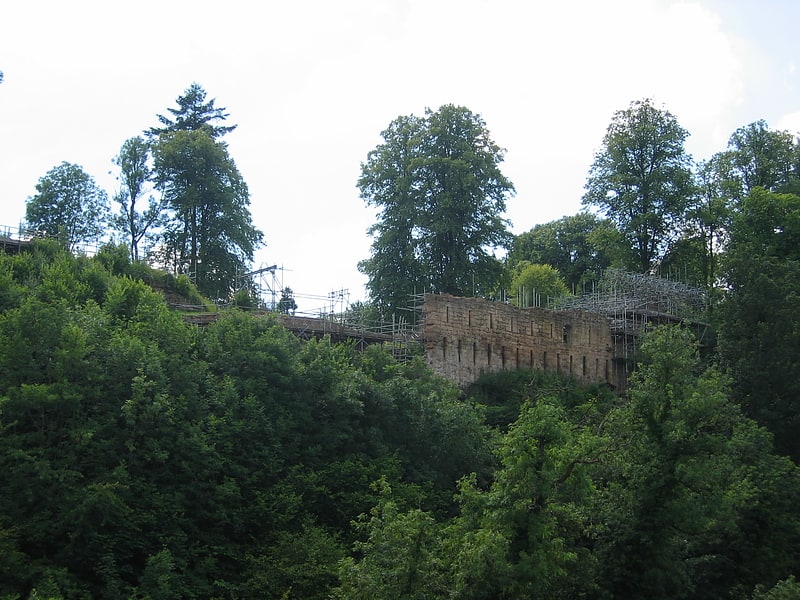
Castle in Scotland. Cadzow Castle, now in ruins, was constructed between 1500 and 1550 at a site one mile south-east of the centre of Hamilton, South Lanarkshire, Scotland. The earlier medieval settlement of Hamilton was formerly known as Cadzow or Cadyou, until it was renamed in 1455 in honour of James Hamilton, 1st Lord Hamilton. The castle sits above a gorge overlooking the Avon Water in what is now Chatelherault Country Park, but was previously the hunting and pleasure grounds of the Duke of Hamilton's estate of Hamilton Palace - this area being known as Hamilton High Parks. The ruin is a Scheduled Ancient Monument.[2]
New Douglas Park

Stadium in Hamilton, Scotland. New Douglas Park, currently known as the Fountain of Youth Stadium for sponsorship purposes, is a football stadium in Hamilton, South Lanarkshire, Scotland, which serves as the home of Scottish Championship side Hamilton Academical. It takes its name from Douglas Park, the club's former stadium which was located immediately to the south of the current site.[3]
Address: New Douglas Park Cadzow Avenue, ML3 0FT Hamilton
Hamilton Mausoleum

Tourist attraction in Scotland. Hamilton Mausoleum is a mausoleum located in Hamilton, South Lanarkshire, Scotland. It was the resting place of the family of the Dukes of Hamilton. Built in the grounds of the now-demolished Hamilton Palace, its high stone used to hold the record for the longest echo within any man-made structure in the world, taking 15 seconds for the sound of a slammed door to fade. In 2014 the record was broken at the Inchindown oil storage tanks in the Scottish Highlands.[4]
Address: Mausoleum Dr, ML3 0DJ Hamilton
Low Parks Museum

Museum in Hamilton, Scotland. The Low Parks Museum is located in Hamilton, South Lanarkshire, Scotland and traces the local history of South Lanarkshire through numerous exhibits on provincial industries and events of local historical importance.[5]
Address: Low Parks Museum 129 Muir Street, ML3 6BJ Hamilton
Hamilton Old Parish Church
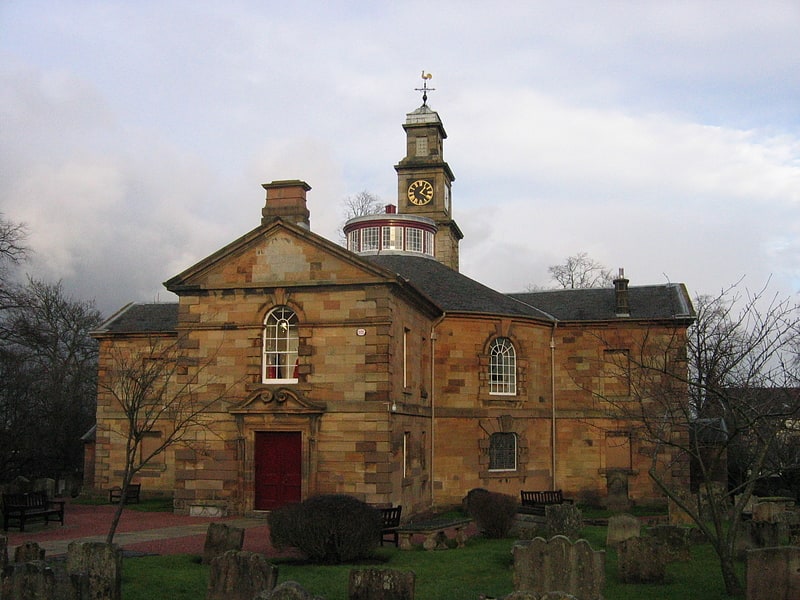
Parish church in Hamilton, Scotland. Hamilton Old Parish Church is a Church of Scotland parish church serving part of the Burgh of Hamilton in South Lanarkshire, Scotland. It is notable for its Georgian architecture.
It was built in 1734, replacing the parish's 15th-century Collegiate Church, which was located at another site, close to the mausoleum in Strathclyde Park. The church is an unusual, largely circular design. It is the only church building to have been designed by the architect William Adam.
The current minister is the Reverend Ross Blackman BSc MBA BD(Honours), who was Ordained and Inducted on 19 November 2015. Mr Blackman studied at Highland Theological College and University of Glasgow. The previous ministers include: Rev John Thomson (2001-2014), and Rev Dr Hugh Wyllie, who was Moderator of the General Assembly of the Church of Scotland in 1992. Dr Wyllie is one of three ministers of Hamilton Old to have served as Moderator of the General Assembly since the end of the Second World War, the others being Matthew Stewart in 1947 and John Fraser in 1958.
Until 1960 this was a collegiate charge with two ministers. After this date John McKechnie, who had been minister of the second charge, became minister of the united charge. There were also two buildings - the Old Church and Auchingramont Church. Auchingramont Church was closed during the ministry of Douglas Macnaughton, who succeeded John McKechnie.[6]
Address: 3 Strathmore Rd, ML3 6AQ Hamilton
Chatelherault Country Park
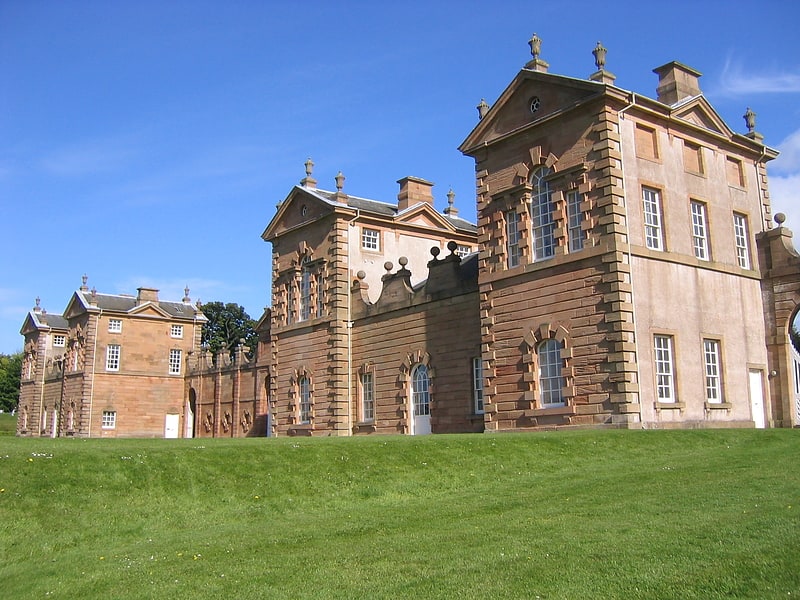
Park in Scotland. Chatelherault Country Park is a country park in Hamilton, South Lanarkshire, Scotland.
Its name is derived from the French town of Châtellerault, the title Duc de Châtellerault having been granted to James Hamilton, 2nd Earl of Arran in 1548 for his part in arranging the marriage of Mary, Queen of Scots, to Francis, Dauphin of France.
The country park is centred on the former hunting lodge, a folly designed to be seen from the now demolished Hamilton Palace at the end of a broad grass slope forming an avenue with lines of lime trees. The lodge was designed by William Adam and completed in 1734. It comprises two buildings, linked by a gateway, in the form of four pavilions above a garden wall. The north facade was visible from the palace and forms the front of the building. To the rear are formal parterre gardens. The buildings provided kennels, stables and accommodation for hunting parties returning from the woodlands to the south. Adam jokingly referred to his creation as 'The Dogg Kennel'.
From 1591, Hamilton Palace became the main residence of the Dukes of Hamilton. Rebuilding as the largest country house in Scotland with an imposing Palladian south front began in 1684, then from 1822 Alexander, 10th Duke of Hamilton had the palace considerably enlarged as a setting for a major art collection, with the north front designed by David Hamilton. Due to debts the art collection was sold in 1882, and the family moved out. In 1889 the 12th Duke leased out coal mining under the Low Parks, and further leasing in 1915 extended the mines under the house itself, causing subsidence to the palace which was sold for demolition in 1921. The ground in front of the lodge was excavated for sand quarrying. The resulting subsidence has created a noticeably lopsided feel in the lodge: coins will roll across the floor, and many visitors report feeling unbalanced and ill. The quarrying was halted in the 1970s, following the death of the 14th Duke. The High and Low parks of Hamilton were given to the nation in lieu of death duties. Historic Scotland began renovating the lodge in the late 1970s, including the fine Georgian plasterwork, and a visitor centre was built to the rear. The lodge and park were opened to the public in 1987 and are now managed by South Lanarkshire Council.
The ruins of Cadzow Castle lie above the gorge of the Avon Water, which runs to the west of the lodge. The bulk of the park lies along the Avon gorge, with woodland walks and cycle routes. A herd of Cadzow cattle live in the fields overlooked by the hunting lodge. This apparently unique breed have white coats and long horns.
In December 2005, access to Chatelherault Country Park was improved with the opening of Chatelherault railway station near to the entrance of the park. This provides two trains from Glasgow (via Hamilton) per hour.
From July 2017 a programme commenced to remove a large area of non-native conifers from the area around the hunting lodge opening views onto the Duke’s Bridge, Cadzow Castle and the Avon Gorge.[7]
Address: Ferniegair. Hamilton, ML3 7UE, Hamilton
Bothwell Road Park
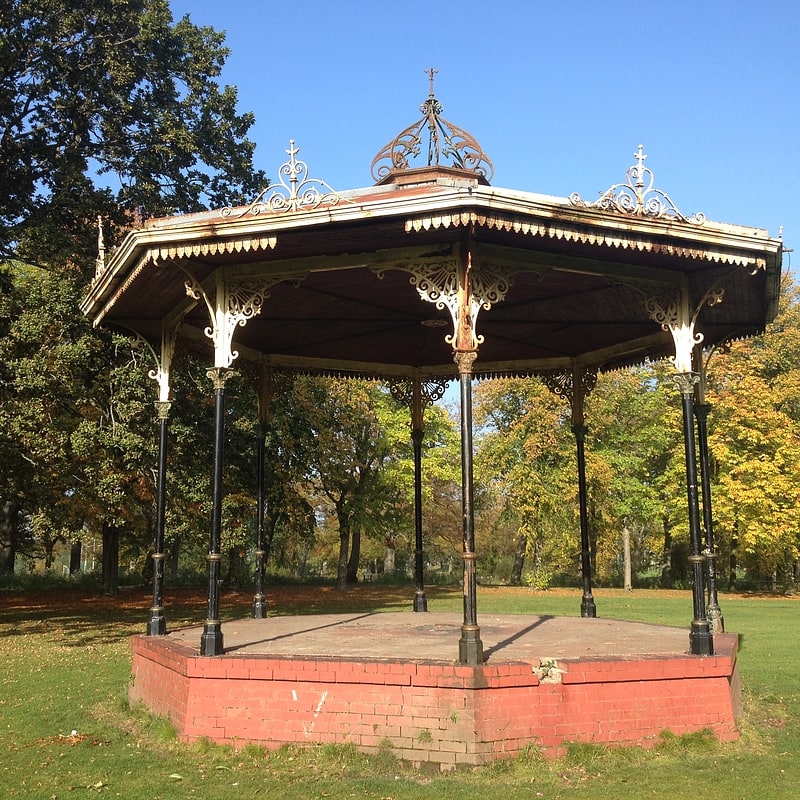
Bothwell Road Park is a large public park in Hamilton, South Lanarkshire, Scotland, which dates from 1894. It is located between the Hamilton West and Whitehill areas, around 1 mile north of Hamilton town centre.
It is also known as Hamilton Public Park.
The Hamilton Cenotaph is located within the park, as well as a traditional bandstand, erected in 1912, which is a category C listed building. There are also areas of ancient woodland and a children's play area. Until recently the park included a small play pond and a sandpit, although, sadly, these were demolished by South Lanarkshire Council. The National Cycle Route 74 passes the front of the park, following Bothwell Road.[8]
Address: 65 Bothwell Road, Hamilton
Hamilton Townhouse
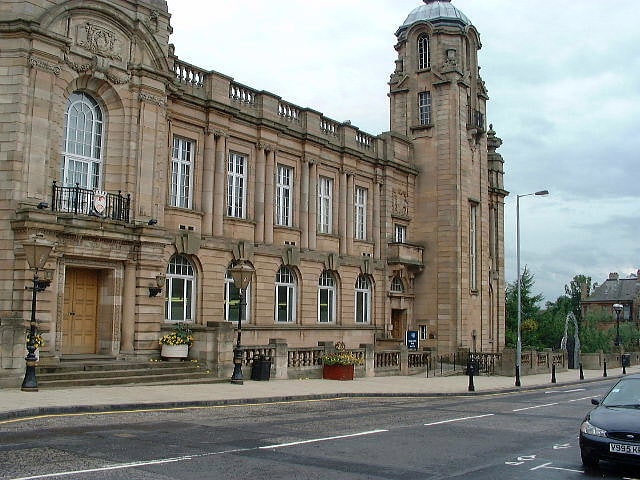
Performing arts theater in Hamilton, Scotland. Hamilton Townhouse is a building in Cadzow Street in Hamilton, South Lanarkshire, Scotland, which is operated by South Lanarkshire Council. It contains both the town's main public hall and public library, as well as various council departments including licensing and community learning. It is a Category B listed building.[9]
Strathclyde Park

Country park in Scotland. Strathclyde Country Park is a country park located on the outskirts of Motherwell in North Lanarkshire, Scotland, named after the former Strathclyde region of Scotland. It is often commonly referred to as Strathclyde, or simply Strathy.
The park covers some 4 km2 (1.5 sq mi), centred on the artificial Strathclyde Loch. It is located next to the River Clyde between Hamilton and Motherwell. Strathclyde Park forms what used to be known as the Low Parks of the now demolished Hamilton Palace and still includes buildings associated with the palace. When the loch was created in the early 1970s it involved the flooding of the old mining village of Bothwellhaugh. The park offers many amenities and attractions such as coarse angling, woodland walks, watersports, and a camping and caravanning site. One of Scotland's theme parks, M&D's, is located in the park. Until 1996, the music festival T in the Park was held here.
The west side of the park is bounded by the River Clyde, which was diverted when the loch was built in 1975. The original course can be seen between the east loch shore and the island. Across the Clyde is the M74 motorway, which creates a significant level of noise. The east side of the park is quieter, with woodland and paths leading up the slopes to Motherwell.
The remains of Bothwellhaugh Roman Fort and a Roman bathhouse can be seen in the park, where the South Calder Water flows into the loch. There is an arched Roman bridge across the South Calder nearby. The site of the Battle of Bothwell Bridge (1679) is to the north west of the park.
Although the focus of the park is on recreation, a variety of habitats are present, including wetlands and native woodland.
The Greenlink Cycle Path start-off point is located in the park and travels to Motherwell Town Centre. Also, a section of the Clyde walkway, from Glasgow to New Lanark, runs through the park.[10]
Barncluith
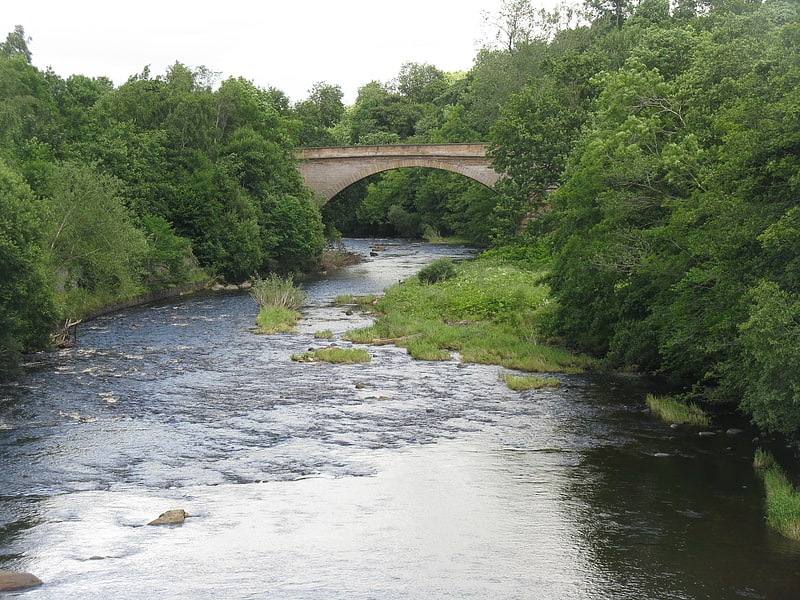
Town in the United Kingdom. Barncluith is an area of Hamilton in South Lanarkshire, Scotland. Barncluith forms the south-eastern part of the town, between the urban centre and the Avon Water. It lies either side of Carlisle Road, which leads out of Hamilton to Chatelherault Country Park, Larkhall and the Clyde Valley. The name derives from "Baron's Cleugh", a cleugh being a ravine.
Barncluith Primary School closed in the 1990s. The school building stands at the corner of Miller Street and Townhead Street, and is now the Barncluith Business Centre. The parish church is St. John's Centre on Duke Street.[11]